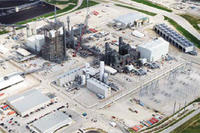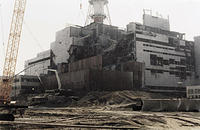-
Growing questions about TSA’s behavioral detection program
TSA has spent roughly $1 billion training thousands of “behavior detection officers” as part of theScreening of Passengers by Observation Techniques (SPOT) program. The purpose of SPOT is to identify facial and body expressions that signals terrorist activity. Psychologists – and the GAO – question the effectiveness of the program.“The common-sense notion that liars betray themselves through body language appears to be little more than a cultural fiction,” says one psychologist.
-
-
Delaware launches cyber initiative
Delaware is joining the number of states that have decided to invest in a statewide cybersecurity workforce to combat the growing threat of cyberattacks directed at both private and public institutions.Delaware hopes its cyber initiative will accelerate current efforts to develop a stronger cyber workforce. The Delaware Cyber Initiative proposes $3 million for a collaborative learning and research network in the form of part research lab, part business park, dedicated to cyber innovation.
-
-
World record in high altitude wind turbine set to be broken
Boston, Massachusetts-based Altaeros Energies, a wind energy company formed out of MIT, said its Alaska demonstration project is set to break the world record for the highest wind turbine ever deployed. The $1.3 million, 18-month project will deploy the Altaeros BAT at a height 1,000 feet above ground. At that height, the BAT commercial-scale pilot project in Alaska will be over 275 feet taller than the current record holder for the highest wind turbine, the Vestas V164-8.0-MW. Investment into the high altitude wind sector has recently gained momentum with several large acquisitions.
-
-
The physics of the 3-point shot
Creighton University physics professor Gintaras Duda, may not see very many basketball players in his classroom, but he says they are instinctual physicists because of what it takes to make the perfect shot on the court, particularly the 3-pointer.
-
-
Southeast England residents most at risk of rising deaths from climate change
Warmer summers brought on by climate change will cause more deaths in London and southeast England than the rest of the country, scientists predict. Researchers looked at temperature records and mortality figures for 2001 to 2010 to find out which districts in England and Wales experience the biggest effects from warm temperatures. In the most vulnerable districts, in London and the southeast, the odds of dying from cardiovascular or respiratory causes increased by over 10 percent for every 1C rise in temperature.
-
-
New infrared technique remotely to detect dangerous materials
Researchers say that infrared technology holds the potential to spot from afar whether a site is being used to make nuclear weapons. They developed a model which precisely characterizes the material in each pixel of an image taken from a long-wave infrared camera. The U.S. National Nuclear Security Administration (NNSA) funded the project. The government’s long-term goal for infrared technology is remotely to detect the exact materials, chemicals and gases coming and going from factories or other sites suspected of illegal nuclear production.
-
-
Climate change, population pressures leading to rethink of floating cities

The concepts have existed for decades, but governments and financiers, responding to the growing threat of rising tides, pollution, and overpopulation to coastal urban centers, are now beginning to take a more serious look at floating cities.
-
-
Controversial Mississippi power station to cut emissions by more than half

A new $5 billion state-of-the-art power facility is under construction Kemper County, Mississippi. It places a firm bet on the future of carbon-capture technology, and other technological advancements, including: it utilizes the gasification process with carbon in unique ways; it recycles treated wastewater to generate power; and it makes money from the carbon dioxide it has removed by selling it to oil companies for their own extraction. Critics say that investing so much money in untested technologies is too much of a gamble.
-
-
“Hacker schools” grow to meet growing demand for programmers
The increasing demand for computer programmers in the job market has led to the growth of “hacker schools,” an alternative to traditional education that offers students a quicker, cheaper, and effective way to learn computer programing. Hacker schools do not offer certificates or diplomas, instead they target students who currently have degrees in other fields but who want a career change.
-
-
Radiation damage to Chernobyl’s ecosystems helps spread radioactivity

Radiological damage to microbes near the site of the Chernobyl disaster has slowed the decomposition of fallen leaves and other plant matter in the area, according to a new study. The resulting buildup of dry, loose detritus is a wildfire hazard that poses the threat of spreading radioactivity from the Chernobyl area.
-
-
Linking extreme weather events to climate change a “distraction”: experts

Connecting extreme weather to climate change distracts from the need to protect society from high-impact weather events which will continue to happen irrespective of human-induced climate change, say experts. They suggest that developing greater resilience to extreme weather events must be given greater priority if the socioeconomic impact of storms, like those that have ravaged Britain this winter, is to be reduced.
-
-
Heat waves threaten global food supply

A new study has, for the first time, estimated the global effects of rising temperatures and elevated levels of carbon dioxide (CO2) on the production of maize, wheat, and soybean. Earlier studies have found that climate change is projected to reduce maize yields globally by the end of the century under a “business as usual” scenario for future emissions of greenhouse gases; however, this new study shows that the inclusion of the effects of heat waves, which have not been accounted for in previous modelling calculations, could double the losses of the crop.
-
-
Universities struggle to balance cybersecurity, openness
Since January 2013, more than fifty academic institutions across the country have been targets of cyberattacks, compromising personal information and intellectual property. Unlike other organizations, universities cannot mandate what devices are used to access their networks, and they must accommodate faculty, students, and researchers spread across the globe. Academic network systems are attractive to hackers because they contain valuable intellectual property.
-
-
Planning for future ecological challenges
How can communities dodge future disasters from Mother Nature before she has dealt the blow? Researchers are taking a unique approach to the issue and gaining input and support from community stakeholders. Researchers conducted a series of one-on-one interviews at Big Hole Valley in Montana and Grand County in Colorado to get an array of community contributors thinking and planning for future ecological hazards, and to consider the impact of those decisions.
-
-
Hacking prof’s computer to change a grade is easier than studying
Academic institutions are easy targets since many do not invest in sophisticated IT personnel or employ the latest cybersecurity programs. Some students have noticed this, and more and more universities are facing a new hacking problem: students hacking their professors’ computers in order to improve their grades. “It became so much easier to change my grades than going to class and working real hard,” a Purdie University student told an Indiana court.
-
More headlines
The long view
New Technology is Keeping the Skies Safe
DHS S&T Baggage, Cargo, and People Screening (BCP) Program develops state-of-the-art screening solutions to help secure airspace, communities, and borders
Factories First: Winning the Drone War Before It Starts
Wars are won by factories before they are won on the battlefield,Martin C. Feldmann writes, noting that the United States lacks the manufacturing depth for the coming drone age. Rectifying this situation “will take far more than procurement tweaks,” Feldmann writes. “It demands a national-level, wartime-scale industrial mobilization.”
How Artificial General Intelligence Could Affect the Rise and Fall of Nations
Visions for potential AGI futures: A new report from RAND aims to stimulate thinking among policymakers about possible impacts of the development of artificial general intelligence (AGI) on geopolitics and the world order.
Smaller Nuclear Reactors Spark Renewed Interest in a Once-Shunned Energy Source
In the past two years, half the states have taken action to promote nuclear power, from creating nuclear task forces to integrating nuclear into long-term energy plans.
Keeping the Lights on with Nuclear Waste: Radiochemistry Transforms Nuclear Waste into Strategic Materials
How UNLV radiochemistry is pioneering the future of energy in the Southwest by salvaging strategic materials from nuclear dumps –and making it safe.
Model Predicts Long-Term Effects of Nuclear Waste on Underground Disposal Systems
The simulations matched results from an underground lab experiment in Switzerland, suggesting modeling could be used to validate the safety of nuclear disposal sites.
